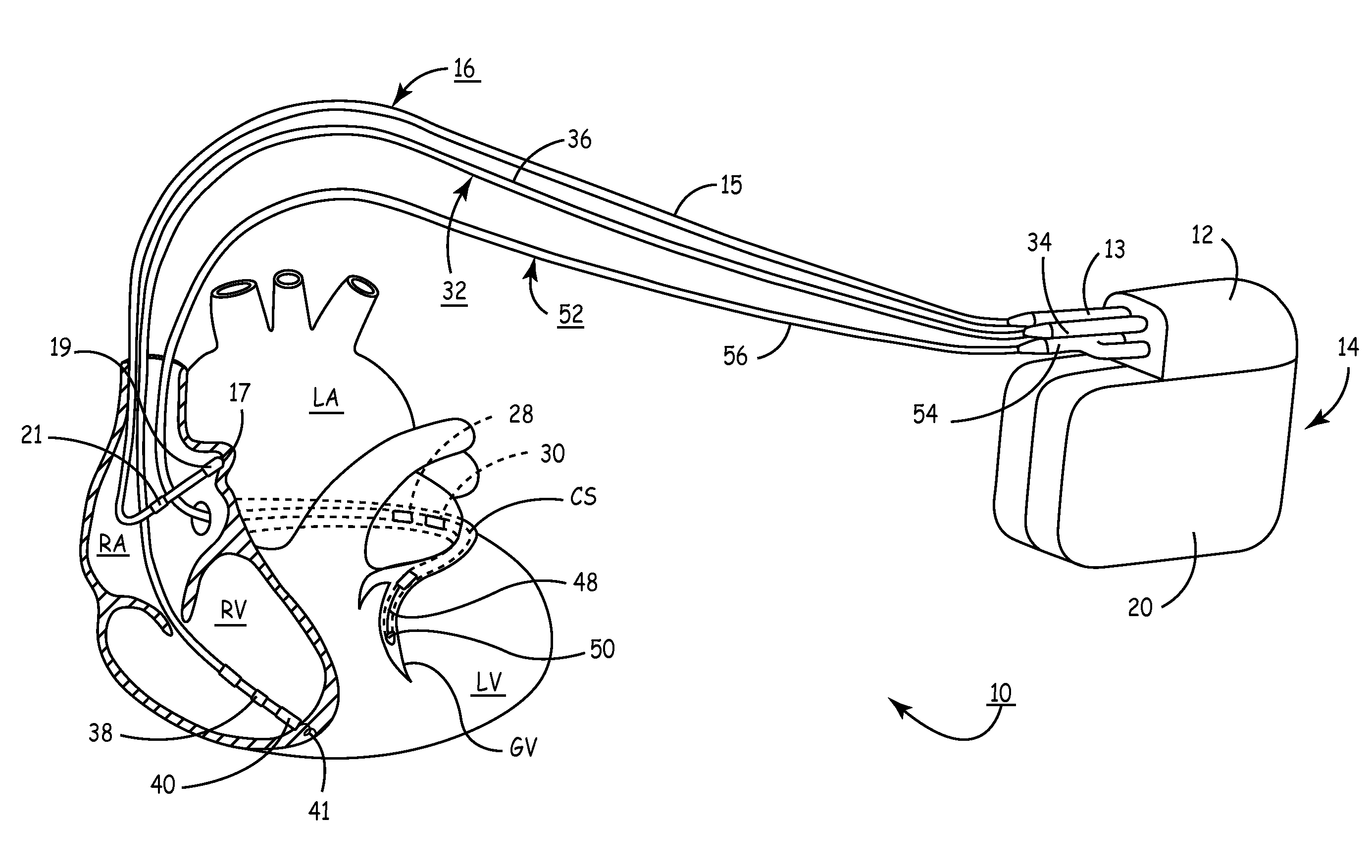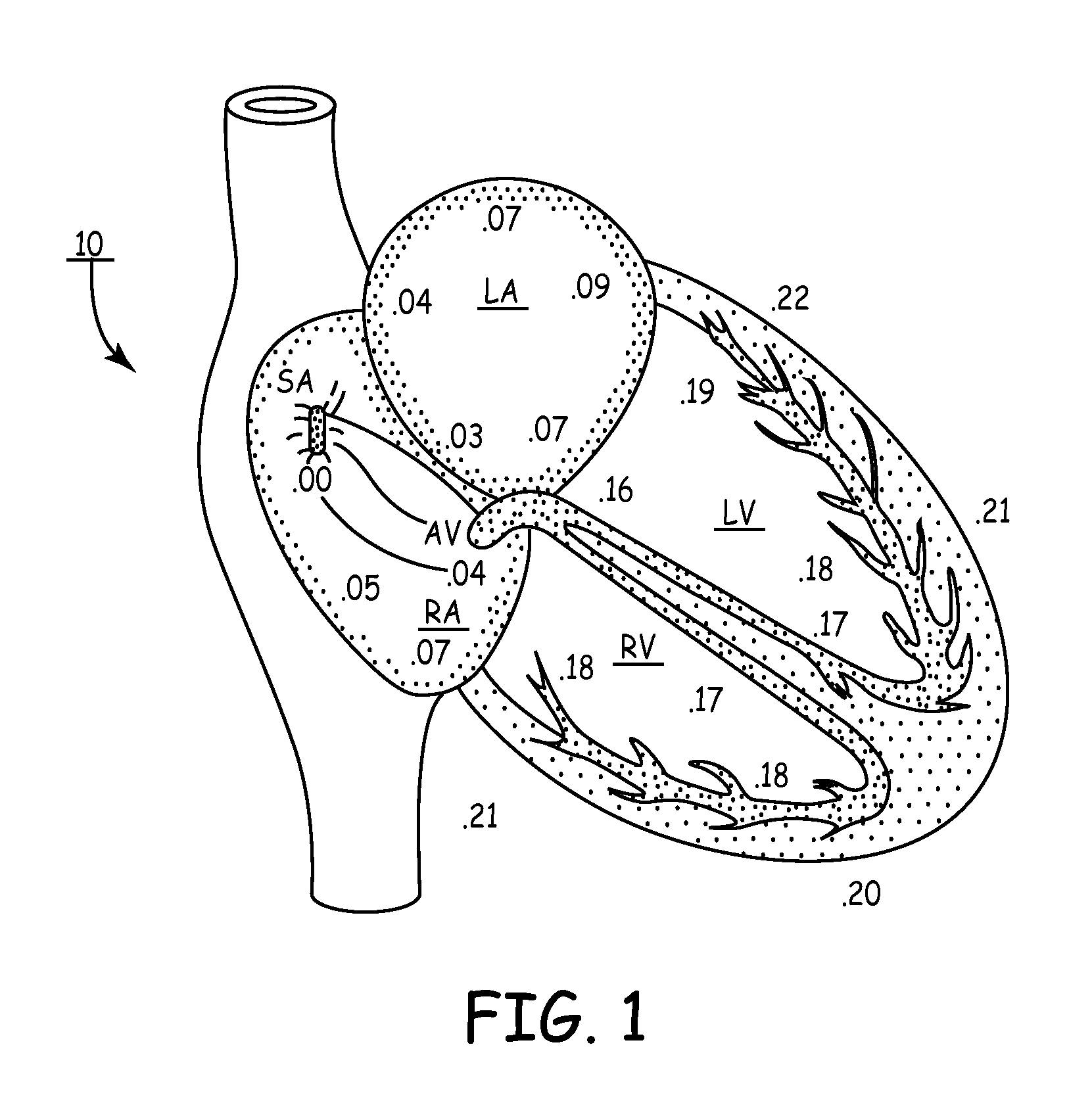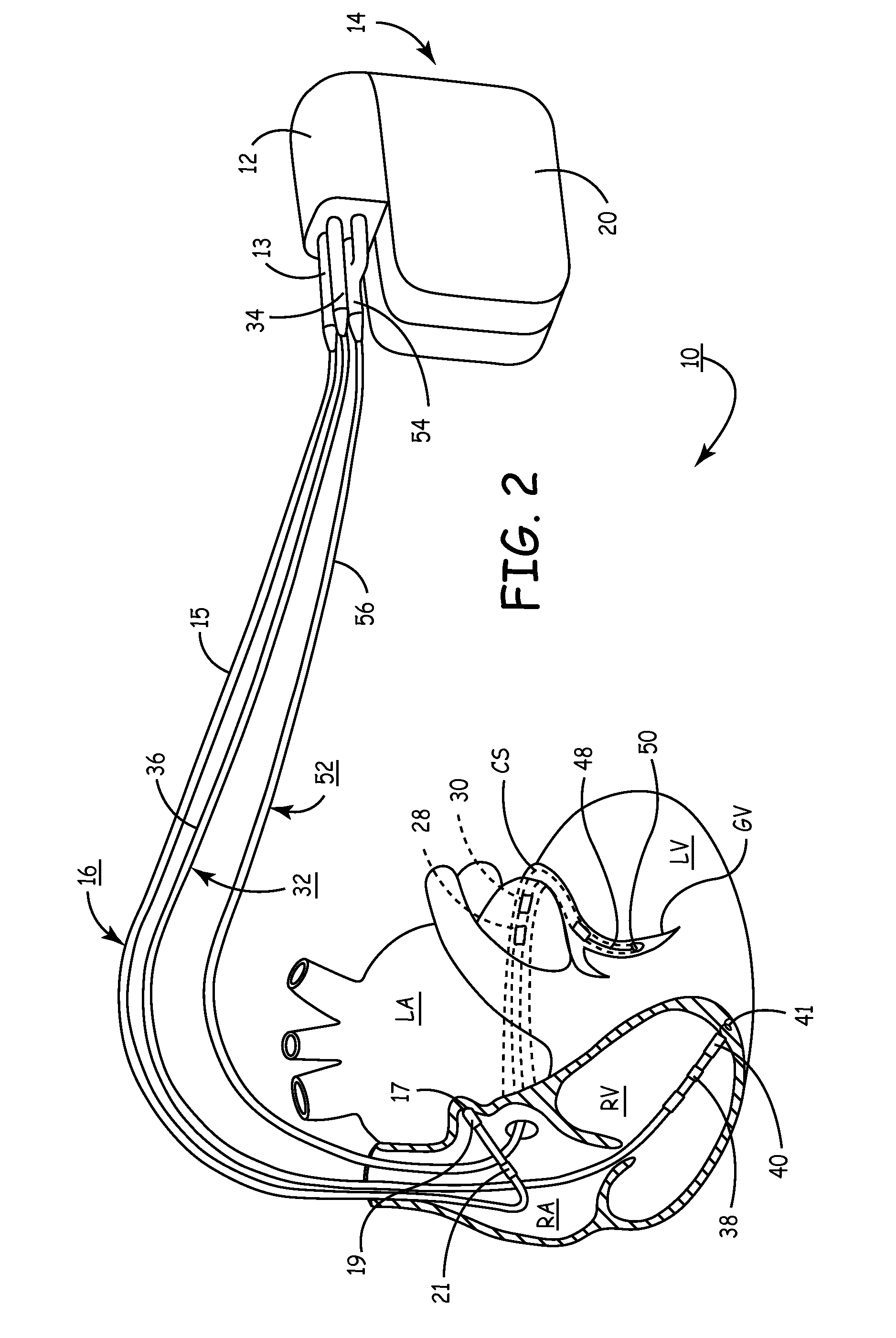Apparatus and methods for automatic adjustment of av interval to ensure delivery of cardiac resynchronization therapy
a technology of automatic adjustment and av interval, which is applied in the field of automatic adjustment of av interval to ensure delivery of cardiac resynchronization therapy, can solve the problems of not always effective delivery of crt and inability to pre-exci
- Summary
- Abstract
- Description
- Claims
- Application Information
AI Technical Summary
Benefits of technology
Problems solved by technology
Method used
Image
Examples
Embodiment Construction
[0027]In the following detailed description, references are made to illustrative embodiments for carrying out an energy efficient, single-pacing stimulus, ventricular pre-excitation pacing mode according to the present invention. It is understood that other embodiments may be utilized without departing from the scope of the invention. For example, the invention is disclosed in detail herein in the context of an intrinsically-based or AV sequential (evoked) uni-ventricular pacing system with dual ventricular sensing that operates in an atrial tracking, demand and / or triggered pacing modes. The present invention provides an efficient pacing modality for restoring electromechanical ventricular synchrony based upon either atrial-paced or atrial-sensed events particularly for patients with some degree of either chronic, acute or paroxysmal ventricular conduction block (e.g., intraventricular, LBBB, RBBB). Cardiac pacing apparatus, according to the invention, are programmable to optionall...
PUM
 Login to View More
Login to View More Abstract
Description
Claims
Application Information
 Login to View More
Login to View More - R&D
- Intellectual Property
- Life Sciences
- Materials
- Tech Scout
- Unparalleled Data Quality
- Higher Quality Content
- 60% Fewer Hallucinations
Browse by: Latest US Patents, China's latest patents, Technical Efficacy Thesaurus, Application Domain, Technology Topic, Popular Technical Reports.
© 2025 PatSnap. All rights reserved.Legal|Privacy policy|Modern Slavery Act Transparency Statement|Sitemap|About US| Contact US: help@patsnap.com



